Classic guest lesson: Joe Bonamassa
Joe shares some of his finest blues licks

Back in 2014, after we chatted with Joe about his forthcoming album Different Shades Of Blue, he talked us though some of the go-to licks that define his high-energy style of blues guitar.
He didn't have any of his touring electrics with him, but a gorgeous Gibson Collector's Choice '57 Goldtop Les Paul, kindly provided by Peach Guitars in Essex, saved the day. It sounded stunning through the Lazy J combo we borrowed from John Henry's for the occasion.
Once Joe was plugged in and warmed up, he explained some of his best blues moves for us, lick by lick. We've transcribed those lessons below for you to learn, and you can follow every note of each lesson with the accompanying video (above). Hopefully, they'll help you explore some of your own Different Shades Of Blue...
Epic Doublestop Bend
"This is a great way to start a blues if you're with your jamming buddies, and maybe they say, 'Hey, you kick it off'. Try this little lick out for size - it's great for starting a blues, because you get these ominous kind of half-bends within the chord. It's a lot of fun if you can get your hands trained to anticipate the changes and bend down. And the real trick with that is making sure that the intonation's right, because if you don't get that right it just sounds like you're making a lot of mistakes!"
Ex 1a
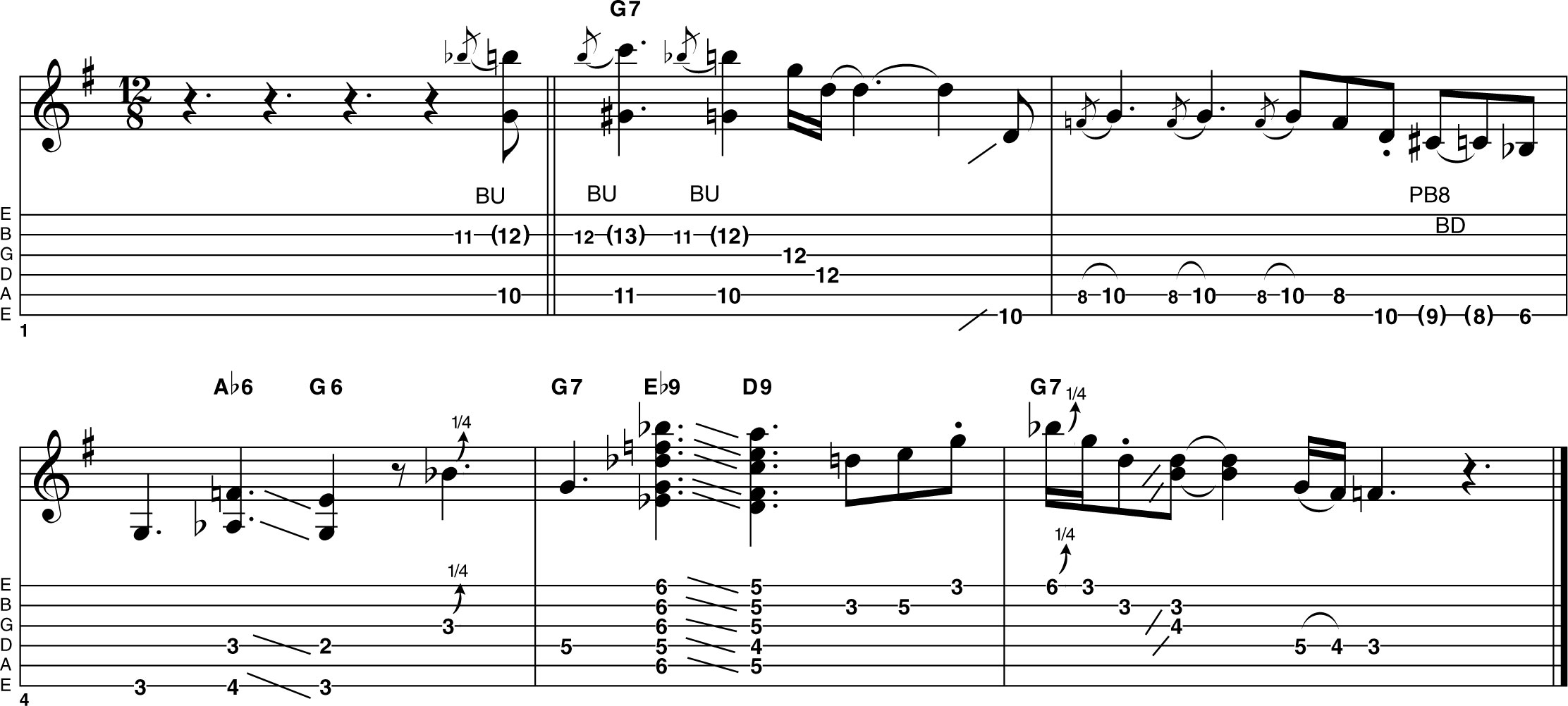
Joe demonstrates a cool way of adding thickness to bluesy doublestops by using a wider interval. The minor 3rd (top note) is pushed up to the major 3rd, creating a partial major chord, and the rest of the lick uses a G blues scale (G Bb C Db D F). This would work well on the last four bars of a 12-bar blues.
Ex 1b
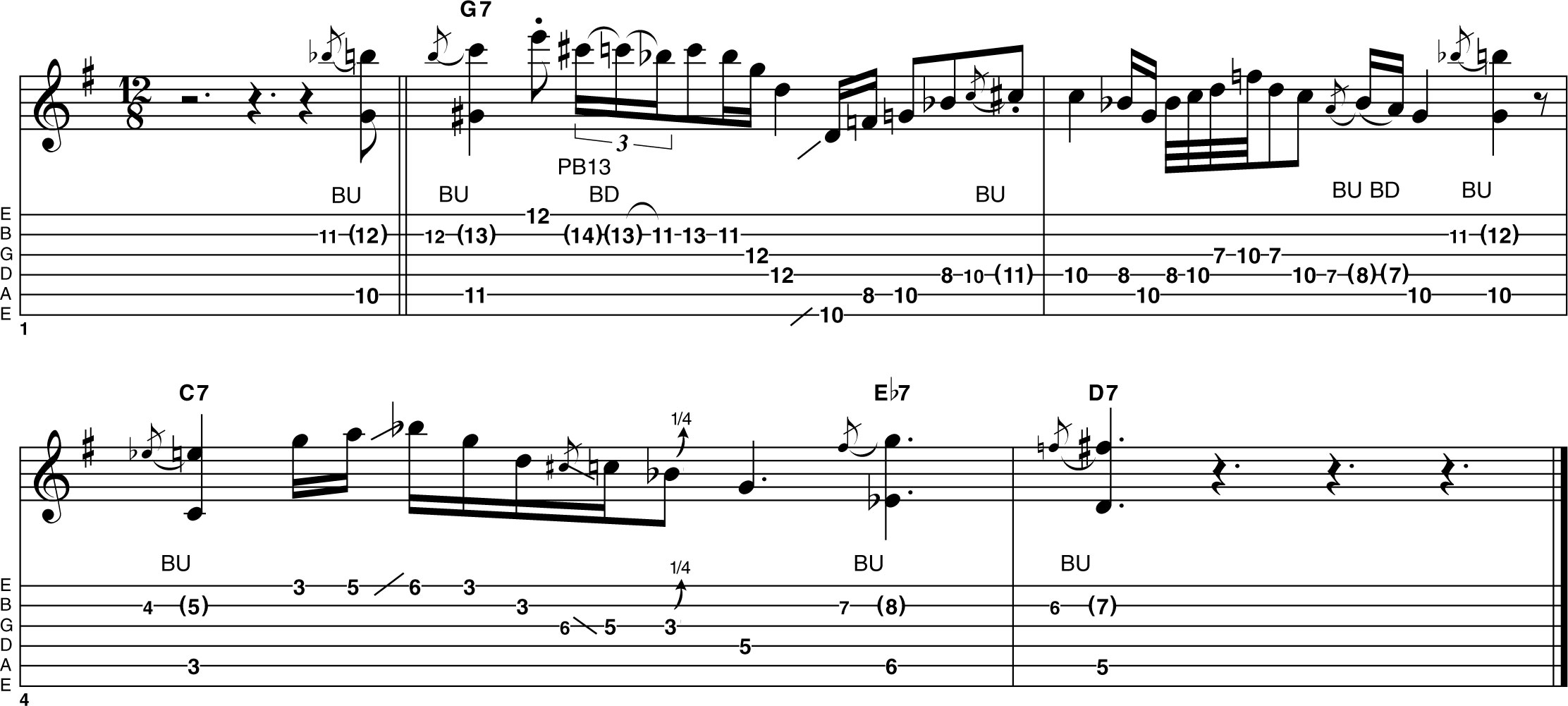
In this example, Joe applies the same doublestop technique to all three chords from the I-IV-V progression. Also, note the Eb chord leading down into the D at the end and the Abchord at the start... the neighbouring chromatic chord is used for temporary tension.
Get the MusicRadar Newsletter
Want all the hottest music and gear news, reviews, deals, features and more, direct to your inbox? Sign up here.
Cascading Blues Licks
"One Of the most commonly asked questions is how you get from point A to point B when you're soloing, such as when you're starting high [among the upper frets] and you want to go lower down on the fretboard. So I think about the fretboard in terms of blocks.
"So if you want to do a cascading lick down the neck, you pull [blocks of notes] from every one of these areas. That also helps you in mid-solo to just look down and then if you're in danger of getting stuck [for where to go next], you can kind of right the ship once it starts listing."
Ex 2a
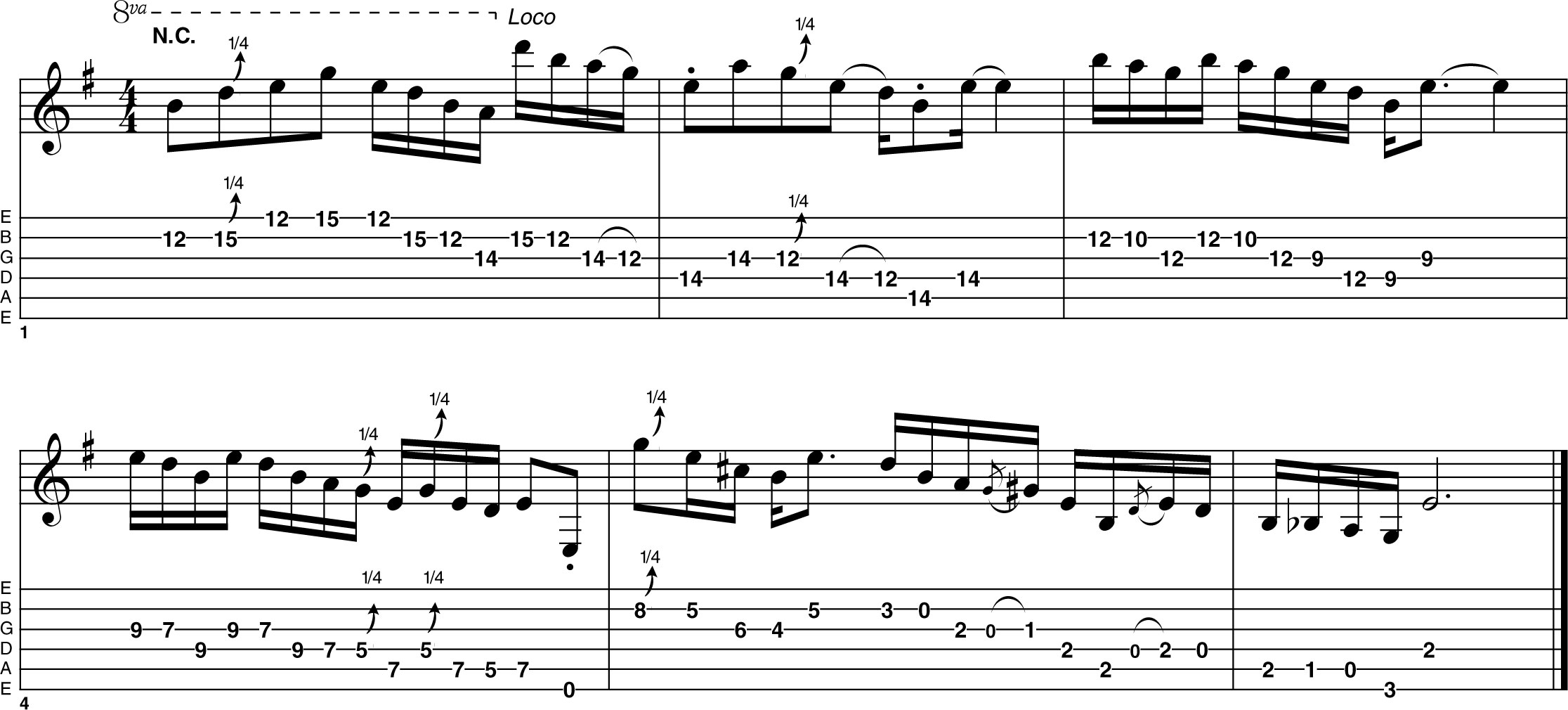
This lesson is about the importance of learning notes all over the fretboard, so you're not restricted to single-box positions. Joe plays some descending E minor pentatonic lines in various positions, sneaking in a C# note from the Dorian mode (E F# G A B C# D) in bar four.
Ex 2b

Another Dorian note (F#) creeps in here and adds melodic interest. This is the simplest form of what Joe is demonstrating here, but don't just play complete descending scales in your own solos; there's a whole lot more you can do besides…
Ex 2c

For a start, you can add little 'kinks' in the melodic contour, so the notes don't just go straight down or up. If you're a feel player, this might seem a deliberate, studied way of working, but the more ideas you feed into your brain during practice sessions, the more variety you can call on when you're really playing.
Ex 2d
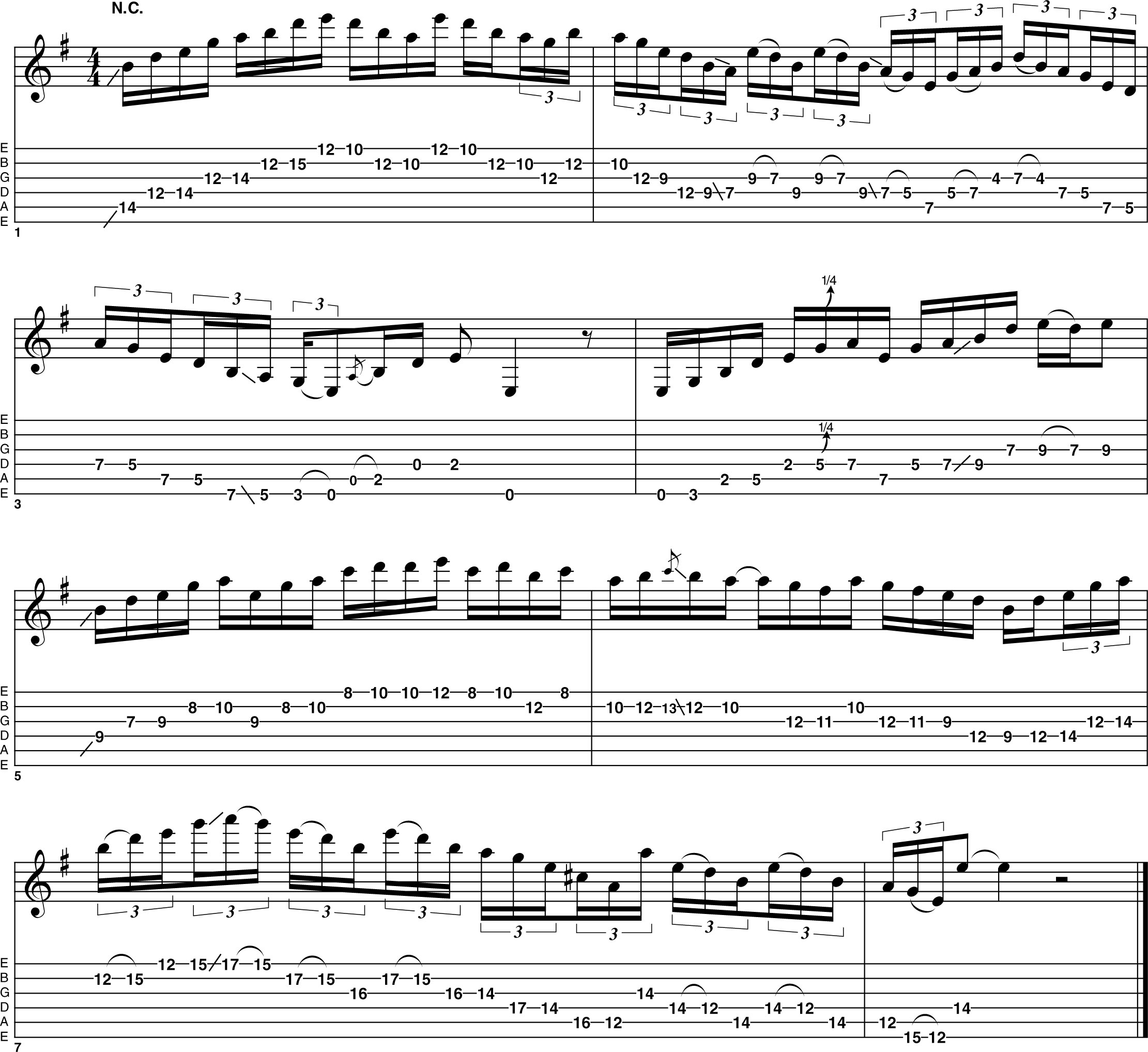
Now Joe opens up, adding more position shifts and those 'kinks' within each melodic contour. You might not think that a single position shift would do much to your playing, but just applying comfortable patterns to a different part of a scale can create melodies you wouldn't normally play.
Super-Heavy Chord Inversions
"I use a lot of these low chord inversions that make it sound almost as if the guitar's tuned down. I'm not a fan of tuning the guitar down, because the guitar sounds brighter, more powerful and heavier in A440. Natural E, natural A.
"These days, guitars get tuned down not only to D but down to B and A, and I've even heard of people tuning down to F#. So in that case you either have a baritone octave guitar, or you have a bass! So, how do you get the heaviness without having to tune your guitar down? Well, try this. It's nice to throw this kind of lick in during the course of a blues or something up-tempo."
Ex 3a

In this lesson, Joe shows how a knowledge of chord inversions can help you get thick, meaty sounds, even when the current chord's root note isn't particularly low on the guitar. When the chord moves from G to C (bar 3), he plays a 2nd inversion C chord (with G, the 5th, at the bottom), keeping things low and pungent!
Ex 3b


Here, Joe isolates the I-V-IV chords, using chromatic neighbouring chords to lead into each one.
Ex 3c
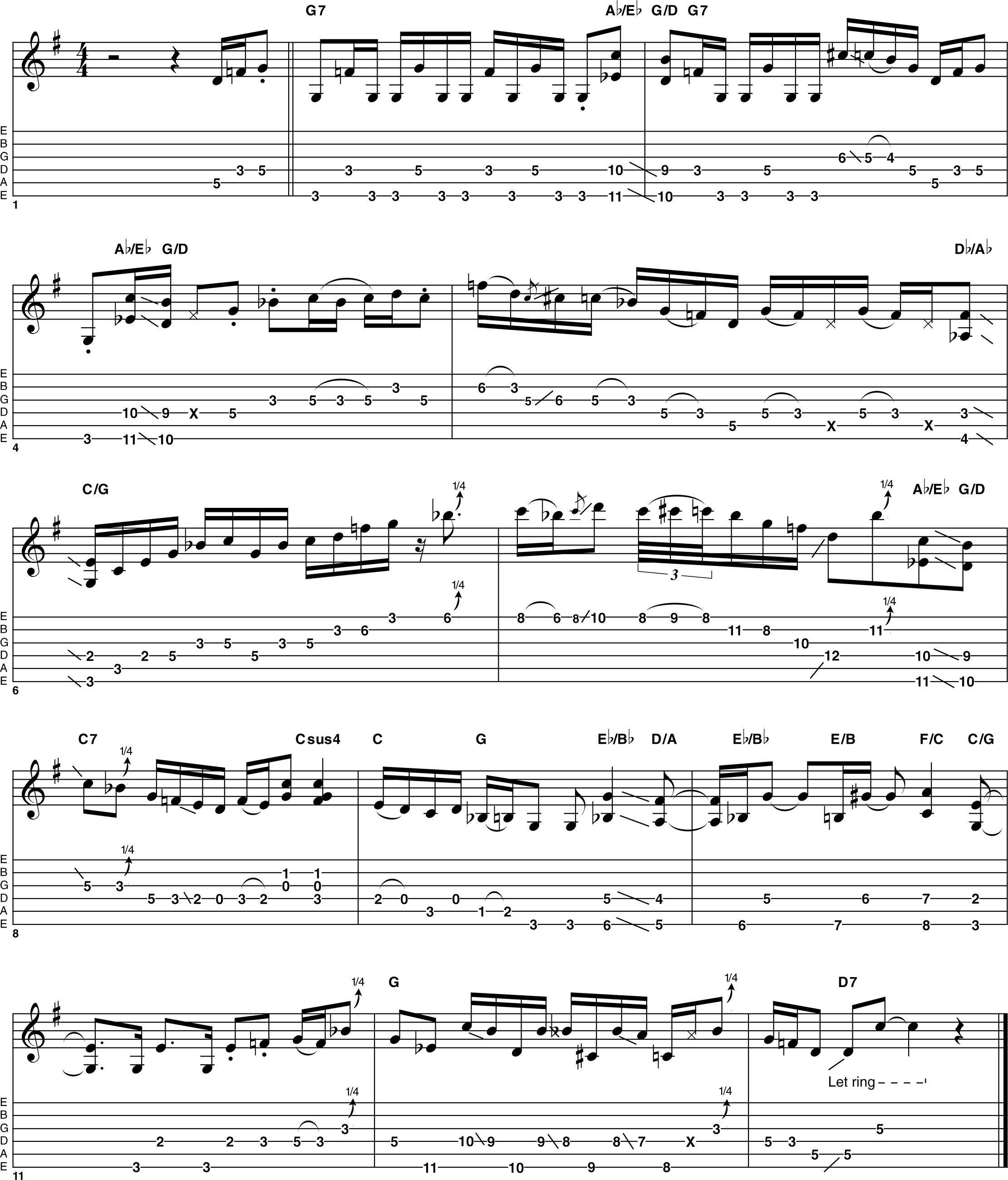
Now Joe uses the inverted chords within the context of a full 12-bar progression in G. As well as using the inversions to mark the main chord changes, he's using them to create nice chromatic doublestop lines.
MusicRadar is the number one website for music-makers of all kinds, be they guitarists, drummers, keyboard players, DJs or producers...
- GEAR: We help musicians find the best gear with top-ranking gear round-ups and high-quality, authoritative reviews by a wide team of highly experienced experts.
- TIPS: We also provide tuition, from bite-sized tips to advanced work-outs and guidance from recognised musicians and stars.
- STARS: We talk to musicians and stars about their creative processes, and the nuts and bolts of their gear and technique. We give fans an insight into the craft of music-making that no other music website can.










